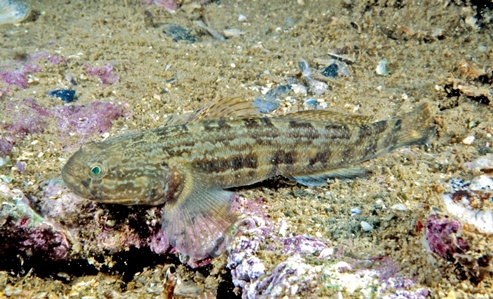General Description
Head depressed, much broader than deep; eyes not close together; mouth large, terminal, reaching to beyond middle of eye in adults; teeth with 3 cusps. Greyish to brown, usually with a black stripe extending from behind top of eye following dorsal profile to tail; a second black stripe present on snout, through eye and upper portion of pectoral-fin base and along midsides to base of tail; stripes often absent in fish longer than 9 cm.To 12 cm.
Biology
Native to temperate waters of Korea, China and Japan where it inhabits sandy areas in seagrass beds. It was accidentally introduced to Australia when juveniles or larvae were transported in ballast water in ships and the water released in ports of call. Ships heading to Australia must now release their ballast water far offshore.
Habitat
Found in disturbed areas of ports and harbours on algal-covered hard surfaces including wharf pylons.
Reefs
Distribution guide
Korea, China and Japan. In Australia recorded from Sydney (New South Wales), Port Phillip (Victoria) and the Swan River (Western Australia).
Species Group
Depth
Water Column
Max Size
12 cm
Commercial Species
No
Global Dispersal
Introduced to Australia
Identify
Conservation Status
- DSE Advisory List : Not listed
- EPBC Act 1999 : Not listed
- IUCN Red List : Not listed






